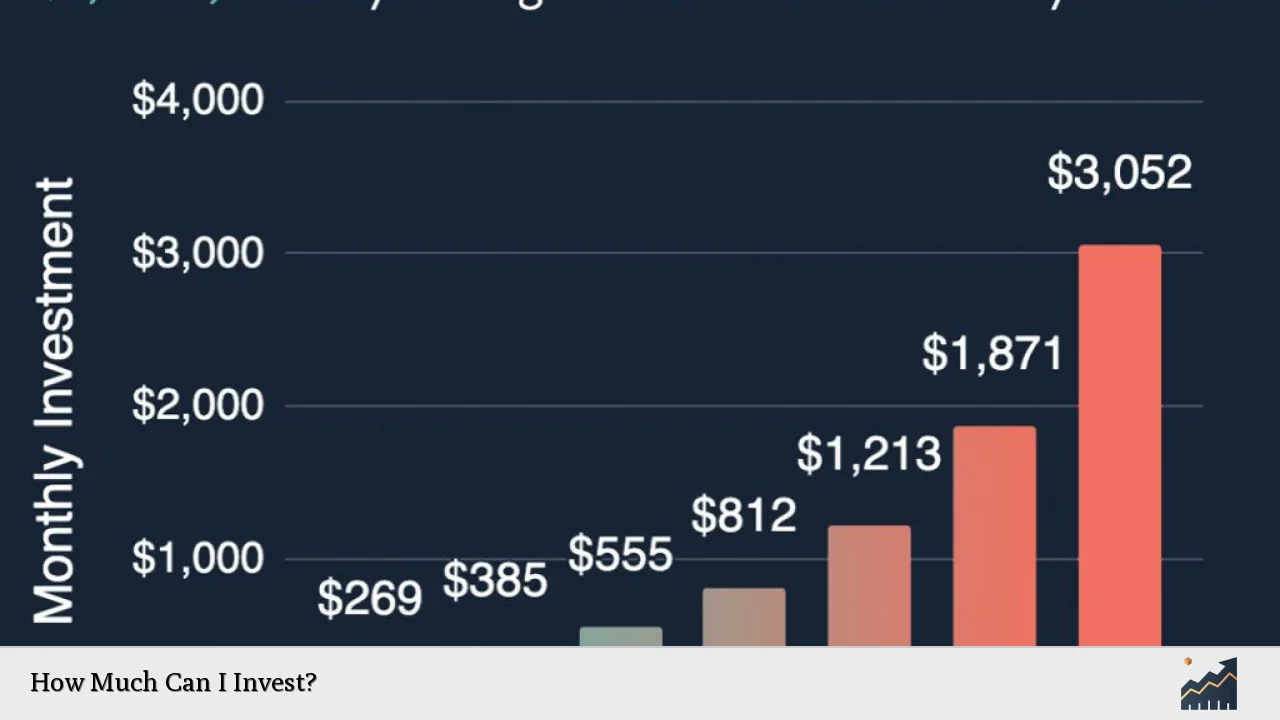Determining how much you can invest is a crucial step in your financial journey. It involves evaluating your personal finances, understanding your financial goals, and assessing your risk tolerance. Whether you’re a beginner or someone with experience, knowing your investment capacity can help you make informed decisions that align with your long-term objectives.
Investing is not just for the wealthy; anyone can start with a modest amount. The key is to understand your current financial situation and establish a budget that allows you to invest without compromising your essential expenses. This article will guide you through the steps to assess how much you can invest, the types of investments available, and strategies to maximize your investment potential.
| Key Factors | Importance |
|---|---|
| Income Level | Determines how much disposable income you have for investing. |
| Expenses | Understanding fixed and variable expenses helps establish a budget. |
| Debt | Paying off high-interest debt should be prioritized before investing. |
| Emergency Fund | A safety net is essential to avoid liquidating investments during emergencies. |
Assessing Your Financial Situation
Before deciding how much to invest, it’s essential to evaluate your financial health. Start by analyzing your income and expenses. Knowing your monthly income allows you to determine how much money you can allocate towards investments after covering necessary expenses.
Consider creating a budget that outlines:
- Fixed expenses (rent/mortgage, utilities, insurance)
- Variable expenses (groceries, entertainment, discretionary spending)
- Savings goals (emergency fund, retirement savings)
This budget will help you identify any surplus income that can be directed toward investments.
Additionally, take stock of any existing debts. High-interest debts, such as credit card balances, should be prioritized for repayment before investing. The interest on these debts often outweighs potential investment returns.
Having an emergency fund is also crucial. This fund should cover at least three to six months of living expenses, ensuring that you won’t need to sell investments in case of unexpected financial challenges.
Setting Investment Goals
Once you’ve assessed your financial situation, the next step is to set clear investment goals. These goals will guide your investment strategy and help you determine how much money you should invest.
Consider the following aspects when setting goals:
- Time Horizon: Are your goals short-term (1-3 years), medium-term (3-10 years), or long-term (10+ years)? Your time horizon will influence the types of investments suitable for you.
- Purpose of Investment: Are you saving for retirement, a home purchase, or education? Each goal may require a different investment approach.
- Risk Tolerance: Understanding how much risk you are willing to take is essential. Higher potential returns often come with increased risk.
Establishing specific, measurable goals will help clarify how much money you need to invest and what type of investment vehicles are appropriate for achieving those objectives.
Understanding Investment Options
Knowing the different types of investments available can help you decide where to allocate your funds. Here are some common investment options:
- Stocks: Buying shares in companies allows you to participate in their growth. Stocks offer high return potential but come with higher volatility.
- Bonds: These are loans made to corporations or governments that pay interest over time. Bonds are generally considered safer than stocks but offer lower returns.
- Mutual Funds/ETFs: These pooled investment vehicles allow investors to buy a diversified portfolio of stocks or bonds managed by professionals. They offer diversification but come with management fees.
- Real Estate: Investing in property can provide rental income and potential appreciation over time. However, it requires significant capital and ongoing management.
- Savings Accounts/CDs: While these options provide lower returns, they are safe places for cash reserves and can be useful for short-term goals.
Understanding these options will help you determine how much capital you need based on your investment strategy.
Creating an Investment Strategy
After assessing your financial situation and understanding your investment options, it’s time to create an investment strategy. This strategy should align with your goals and risk tolerance while considering how much money you can realistically invest.
Here are key components of an effective investment strategy:
- Diversification: Spread your investments across different asset classes to reduce risk. A diversified portfolio can withstand market fluctuations better than one concentrated in a single asset class.
- Regular Contributions: Consider setting up automatic contributions to your investment accounts. This approach encourages disciplined investing and can take advantage of dollar-cost averaging.
- Monitoring and Adjusting: Regularly review your portfolio’s performance against your goals. Adjustments may be necessary based on market conditions or changes in personal circumstances.
Creating a well-thought-out strategy will ensure that you’re investing within your means while working towards achieving your financial objectives.
FAQs About How Much Can I Invest?
- How do I determine my investment budget?
Create a budget by analyzing your income, expenses, debts, and savings goals. - Can I start investing with a small amount?
Yes, many platforms allow starting with minimal amounts; even $100 can be enough. - Should I pay off debt before investing?
Yes, prioritize high-interest debt repayment before allocating funds for investments. - What types of accounts should I consider for investing?
You can choose between taxable accounts or tax-advantaged accounts like IRAs or 401(k)s. - Is it necessary to have an emergency fund before investing?
Yes, having an emergency fund protects against needing to liquidate investments unexpectedly.
Conclusion
Determining how much you can invest involves careful consideration of your financial situation and future goals. By assessing your income, expenses, debts, and savings needs, you can establish a realistic budget for investing. Setting clear investment goals aligned with your risk tolerance will guide your decisions on the types of investments suitable for achieving those objectives.
Creating a well-rounded investment strategy that includes diversification and regular contributions will enhance the potential for long-term growth while minimizing risks associated with market volatility. Remember that investing is a journey; starting small is perfectly acceptable as long as you’re making informed decisions along the way.

